#michael moschen
Explore tagged Tumblr posts
Text
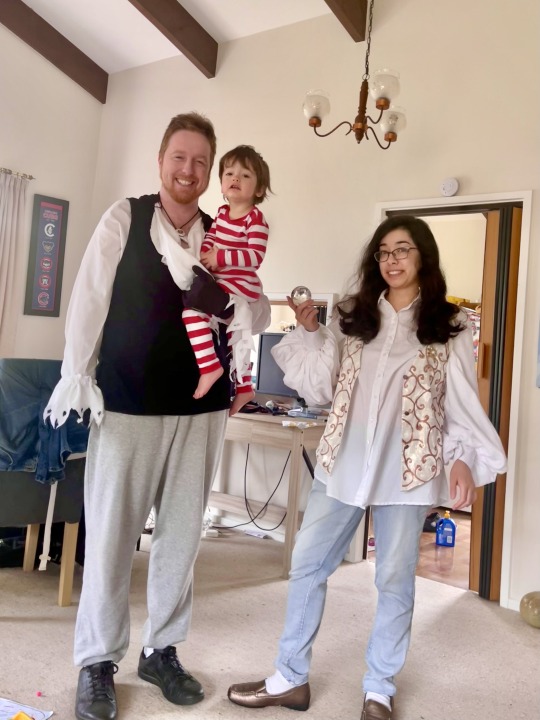

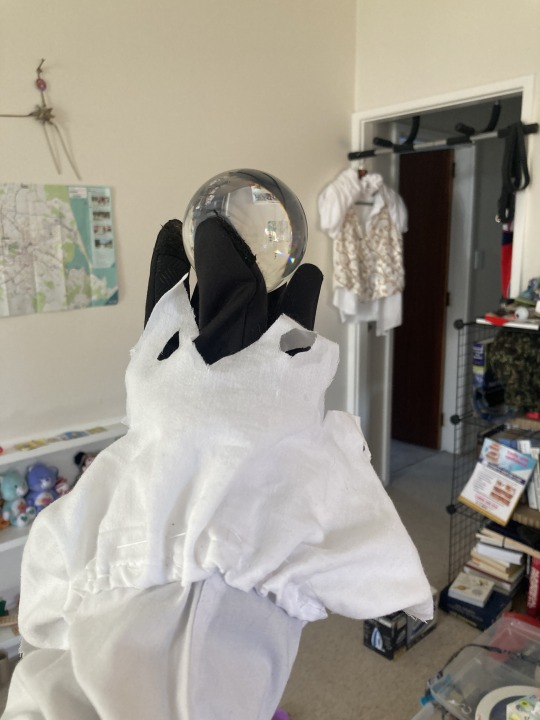
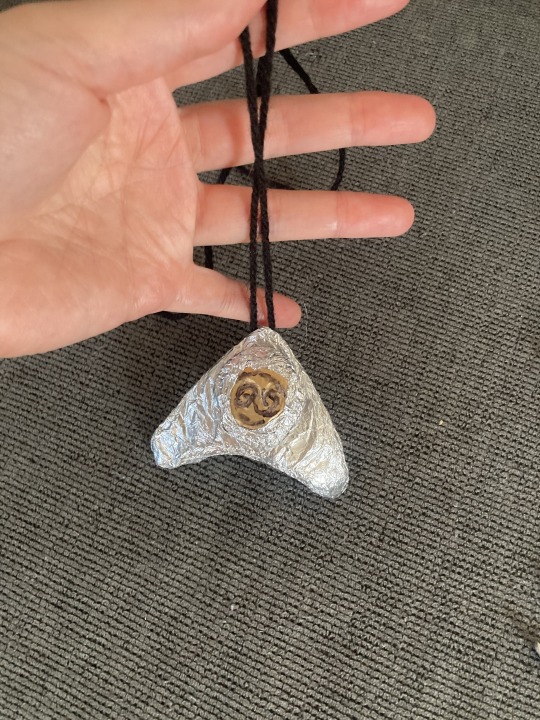
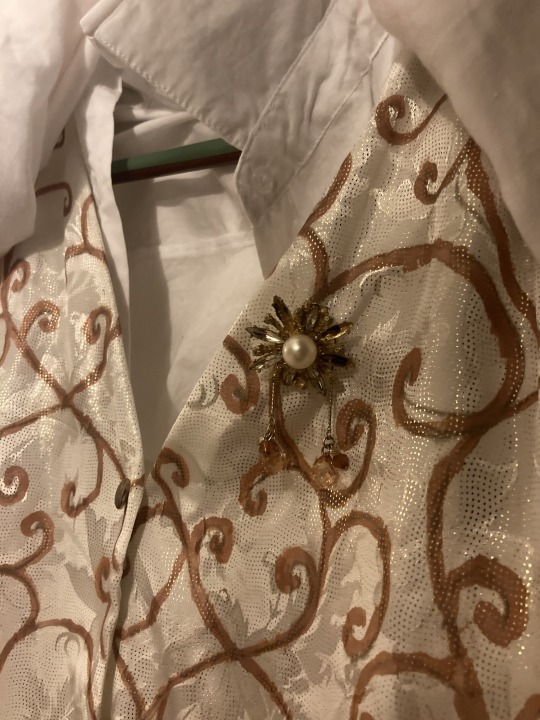

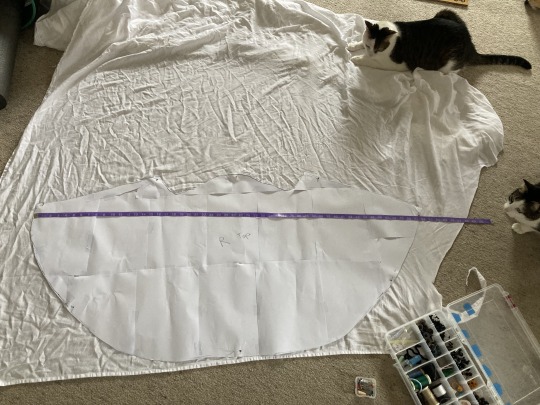
Happy Halloween! I am very pleased with our Labyrinth family costume, it's not crochet but I had some fun thrifting, sewing and miscellaneous crafting! And, you know, investing in a high quality set of pajamas for the little one ^_^
#labyrinth#david bowie#michael moschen#costume#cosplay#halloween#sarah williams#jareth the goblin king#jareth labyrinth#labyrinth 1986#thrifting#diycostume#jareth#sarahwilliamscosplay#jarethcosplay
19 notes
·
View notes
Text
once again thinking of michael moschen who played Jareth's arms when juggling in Labyrinth

guy was incredible
youtube
#a butterfly obsesses#labyrinth#michael moschen#I was thinking it must be weird to be cast as just hands#but then again this is a movie full of puppeteers#Youtube
3 notes
·
View notes
Text
youtube
Whatever you say, my king.
11 notes
·
View notes
Photo
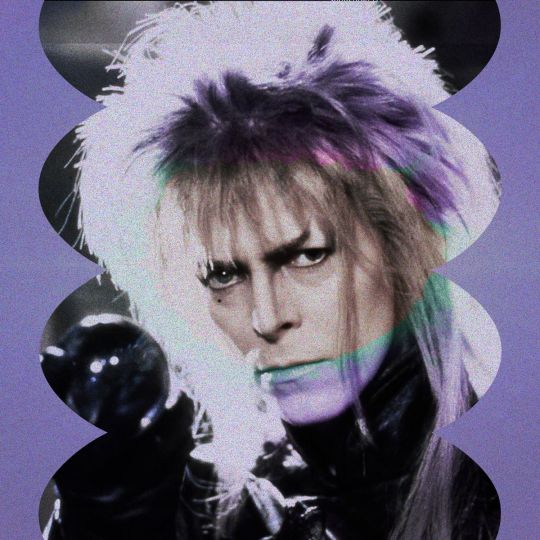
Ever the creative polymath, David Bowie had a fascinating acting career that ran parallel to his music career. His roles were legion: The Man Who Fell to Earth’s Thomas Jerome Newton, an alien who went looking for water for his home planet and found sex, booze, and a chambermaid instead; Nikola Tesla in The Prestige; and even Lord Royal Highness in SpongeBob — because why not? He even parodied his own untouchable coolness in Extras and Zoolander. But perhaps his most notable role came in 1986 when he slipped into Jareth the Goblin King’s oversized hair and ultra-tight pants for Labyrinth.
(via 10 Things You Didn’t Know About David Bowie’s ‘Labyrinth’)
#david bowie#the labrynth#jim henson#Jennifer Connelly#Jareth the Goblin King#Michael Moschen#toby Froud#Hoggle
10 notes
·
View notes
Photo
@rubykgrant
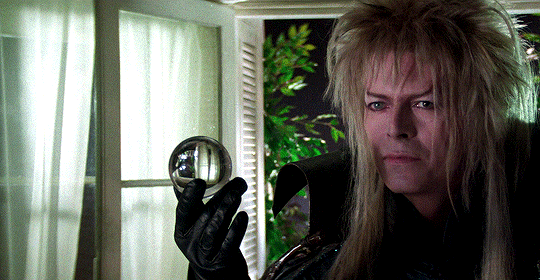
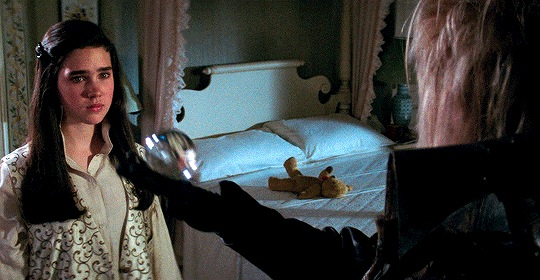


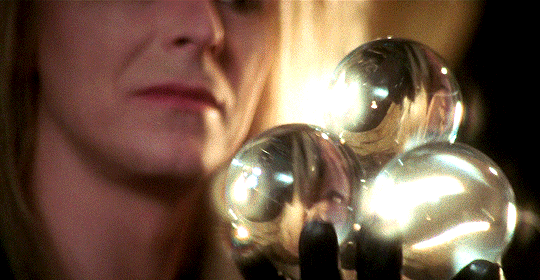
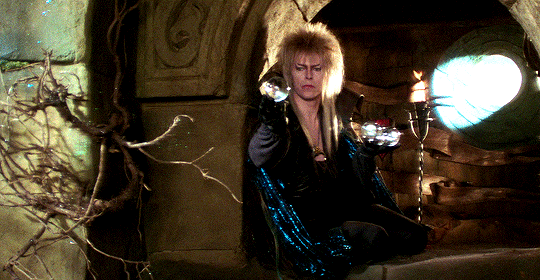


The various things that Jareth does with the crystal balls (rolling them around his arms and in his hands and so forth) are not camera tricks or any other kind of special effect. They are actually done by choreographer Michael Moschen, who is an accomplished juggler. Moschen was actually crouched behind Bowie with his arm(s) replacing Bowie’s. Unlike a typical Muppet performance, however, he had no video screen to view his performance. In other words, his manipulations were performed completely blind.─ IMDB Trivia DAVID BOWIE as “Jareth, King of The Goblins” in Labyrinth (1986) MICHAEL MOSCHEN ─ Choreographed and performed with crystal balls as David Bowie’s hands
#just some interesting trivia ^^#trivia#movie trivia#movies#labyrinth#jareth#michael moschen#david bowie#juggling#practical effects
11K notes
·
View notes
Text





my hss ships; gala moschen x julian castillo, elisa connor x emma hawkins, michael harrison x elena connor, maria flores x edurne connor, halley buchaneer x skye crandall
#playchoices#high school story prime#high school story#high school story: class act#julian castillo#emma hawkins#michael harrison#maria flores#skye crandall#mc: gala moschen#mc: elisa connor#oc: edurne connor#oc: elena connor#mc: halley buchaneer#picrew
13 notes
·
View notes
Text

tfw you did the laughing gnome so why not be a Jim Henson puppet
#the puppeteer is Michael Moschen#Sometimes Jennifer Connelly like during the ball scene#david bowie#meme school#labyrinth 1986#cursed imo
29 notes
·
View notes
Text
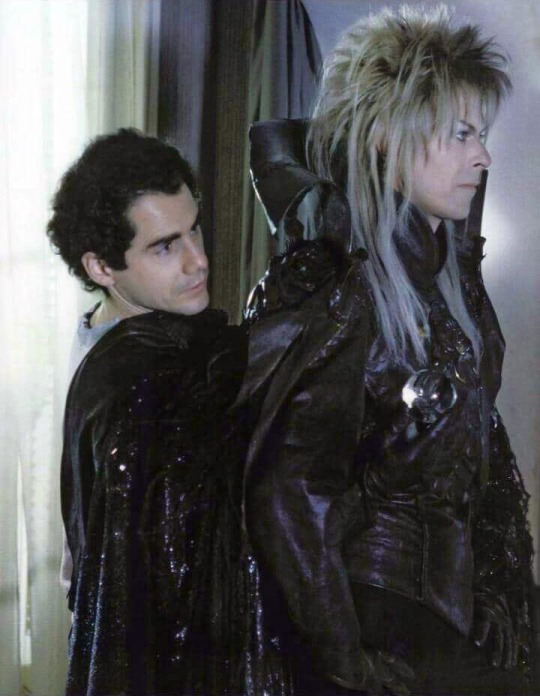
In the 1986 film Labyrinth, the crystal ball manipulations seen to be performed by David Bowie's character were actually done by Michael Moschen, who stood behind Bowie during filming. Since Moschen could not see the objects he was juggling, it took many takes to film the scenes with the crystal balls.
25 notes
·
View notes
Text
This makes me so happy 😍😍😍😍
XD I know just the blooper you’re talking about. It never fails to make me laugh. Bowie’s little laugh every time Mr Moschen drops the crystal is so friggin adorable. XD I love him
just wanted to throw something together for our king David Bowie's birthday. I know everyday he is missed! I had so much fun making this and other content today. 💜
63 notes
·
View notes
Text
Okay, ever since I saw the dvd bonus features when I was like 10 years old, and saw that they replaced David Bowie's hand with someone else. All I can think whenever I watch Labyrinth is, look, no hands.

I mean, there is a guy hunched up behind him spinning those balls.

Okay, no discredit to the original guy (Michael Moschen) that is some serious talent he's got, I mean, look at how seamlessly that ball is flowing between his hands, the way it rolls up his hands and stops on his fingers.
He's doing this hunched over behind David Bowie, wearing leather gloves and the sleeve of a leather jacket, blind.

That guy was struggling.
[Image description: a gif from Labyrinth of Jareth sitting at a castle window, twirling crystal balls in one hand and taking one off to blow it away.
a gif from Labyrinth of Sarah watching Jareth contact juggle a crystal ball between two hands
a gif from behind the scenes Labyrinth, of Michael Moschen hunched over behind David Bowie, trying to roll a crystal ball down his arm to catch in his hand and missing
/end image description]
#okay who WHO absolutely who remastered this movie. i just wanna talk#why is it so dark. why did you turn down the lights.#this was only meant to be a joke post whoops#labyrinth
126 notes
·
View notes
Note
most wanted faces please?
could be male, female or nb!
hello there ! we would love to see any of the following ( but please double check the taken faces page before applying <3 ) wang ziyi, andrew koji, justin h min, matilda de angelis, tom blyth, patrick gibson, timotee chalamet, mena massoud, arnas fedaravicius, charles melton, tom ellis, charles michael davis, michael evans behling, gong jun, philip froissant, jamie blackley, santiago cabrera, sam corlett, oliver stark, aaron fontaine, colin o'donoghue, kit young, toby rego, daniel kaluuya, dev patel, cillian murphy, andrew scott, freddy carter, tommy martinez, robert pattinson, idris elba, deepika padukone, adeline rudolph, samantha logan, hande ercel, namtam tinaparee jasmine tookes, wawaa nicha, celeste cortesi, arsema thomas, charitra chandran, shay mitchell, natalie dormer, ozge yagiz, poppy drayton, olivia cooke, charlotte hope, samara weaving, jessica chastain, marina moschen, jessie mei li ( uses she/they pronouns ), martin sensmeier, elliot fletcher, song kang, jeremy allen white, daniel kaluuya, robert pattinson, jharrel jerome, timothy olyphant, pedro pascal, toby regbo, freddy carter, lorenzo zurzolo, birkan sokullu, riz ahmed, rami malek, serkay tutuncu, peter gadiot, aytac sasmaz, alex fitzalan, andrew scott, wi ha joon, apo nattawin, andrew koji, chay suede, marwan kenzari, cha eun woo, devon terrell, chaske spencer, kiowa gordon and matteo martari, greta onieogou, arsema thomas, deepika padukone, beren saat, beste kökdemir, serkan cayoglu, sidarth malhotra, medalion rahimi, aaron fontaine, celeste cortesi, amita suman, fabian frankel, avan jogia, lee soo hyuk, oscar isaac, charles michael davis, mena moussad, berk cankat, diego boneta, diego luna, sebastian croft, leo woodall, noah centineo, joe locke, kit connor, sofia vegara, penelope cruz, zoe saldana, emma stone, jennifer lawrence, journee smollett, lupita nyong'o


#established rp#active rp#appless rp#oc rp#mumu rp#fantasy rp#period rp#mature rp#tumblr rp#original rp#fandom rp#small rp#relaxed rp#literate rp#lsrp#lsrpg#mw
3 notes
·
View notes
Video
youtube
Michael Moschen performs THE TRIANGLE
5 notes
·
View notes
Text
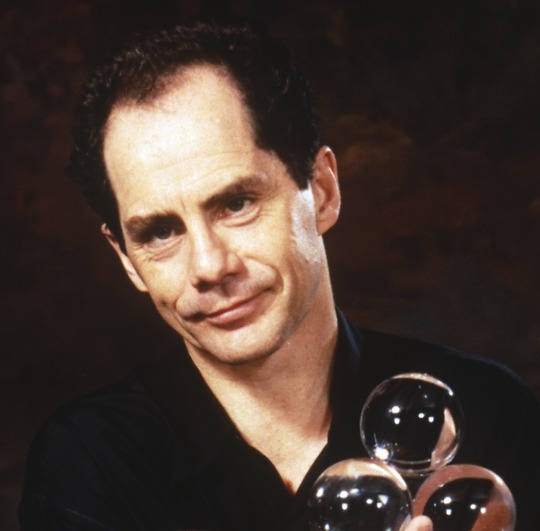
The juggling done by David Bowie's character in “Labyrinth” was actually performed by juggler Michael Moschen, who had to do all the tricks blind while standing behind Bowie. He won a MacArthur Fellowship "Genius Grant" for his techniques a few years later in 1990.
1 note
·
View note
Photo
I will again throw in that the juggler in Labrinth is Michael Moschen! He's very cool.
youtube
Also I have to wonder how you would think live theater ever gets anything done? There's no choice but practical there - and in real time, too.
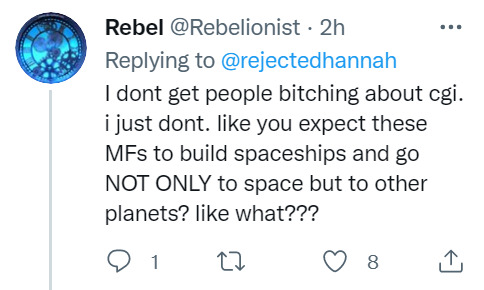
Marvel movies have completely eliminated the concept of practical effects from the movie-watching public’s consciousness
305K notes
·
View notes
Text
Juggling

Juggling is the physical skill of manipulating objects for recreation, entertainment, art, or sport. The most recognizable form of juggling is toss juggling, where objects are thrown and caught repeatedly, often in rhythmic patterns. However, juggling encompasses a wide range of disciplines beyond toss juggling, including contact juggling, bounce juggling, diabolo, devil sticks, cigar boxes, and more. It is practiced both casually and professionally, as a component of circus arts, street performance, and competitive disciplines. Juggling has deep historical roots and has evolved to encompass complex mathematical theories, physiological implications, and cultural significances.

The term “juggling” originates from the Middle English jogelen, meaning "to entertain by performing tricks," itself derived from the Old French jogler and Latin ioculāri, meaning “to jest or joke.” Today, juggling typically refers to the intentional manipulation of objects in patterns or sequences, especially with the hands and through the air.
The classic definition involves at least three objects, since two can be alternated with one object in each hand, not requiring the object to be airborne at any time. The minimum number of objects for true juggling is thus traditionally considered three, although two-object juggling can be complex and demanding depending on the technique used (e.g., one-handed juggling, contact juggling).

Juggling is one of the oldest forms of art and entertainment, with evidence dating back over 4,000 years. Ancient Egyptian tombs, such as that of an unknown prince from the Beni Hasan necropolis (circa 1994–1781 BCE), depict women juggling balls. References also exist in ancient Chinese, Indian, Greek, and Roman cultures. The Chinese historical text Liezi, dating to the 3rd century BCE, describes a warrior who could keep multiple weapons in motion while performing martial arts. In Rome, jugglers known as pilarii were employed to entertain at banquets and celebrations.
During the medieval period in Europe, jugglers were associated with traveling entertainers, often performing alongside musicians and acrobats. They were sometimes mistrusted or marginalized by society. The art began to evolve into a more respected profession with the development of the modern circus in the 18th and 19th centuries, where juggling became a staple act.
In the 20th century, juggling underwent formalization and expansion. Organizations such as the International Jugglers' Association (IJA), founded in 1947, and the World Juggling Federation (WJF), founded in 2000, helped standardize competition formats and encourage innovation and excellence in technique.

Types of Juggling:
1. Toss Juggling:
This is the most widely recognized form. Objects are thrown into the air and caught in a repeating pattern. The three-ball cascade is the foundational pattern for toss juggling and is often the first learned. Other toss patterns include the reverse cascade, shower, columns, and multiplexes. Toss juggling can involve balls, clubs, rings, torches, knives, and other throwable items. Advanced patterns include Mills Mess, Rubenstein's Revenge, and body throws.
2. Contact Juggling:
Unlike toss juggling, contact juggling involves the manipulation of one or more objects that remain in constant contact with the body. Made popular by Michael Moschen in the 1980s, it includes rolling balls along the hands, arms, and body in smooth, flowing motions. The “crystal ball” style aims to create the illusion that the ball is floating or motionless in space.
3. Bounce Juggling:
Here, balls are bounced off the ground rather than tossed into the air. Bounce juggling can be either synchronous or asynchronous and is affected by the elasticity of the ball and the surface. It allows unique visual effects and different timing patterns from traditional toss juggling.
4. Club Juggling and Passing:
Clubs are asymmetrical objects that rotate during flight. Club juggling is often considered more challenging than ball juggling due to the need to control spin and handle orientation. Passing involves two or more jugglers exchanging clubs in patterns, demanding coordination and rhythm.
5. Ring Juggling:
Rings are flatter, larger objects that allow for a different visual effect and can be spun on fingers or around limbs. Rings can be tossed in patterns similar to balls and can be passed, stacked, or manipulated on the body.
6. Combination and Prop-Based Forms:
Jugglers may integrate diabolo (a double-coned object manipulated with string), devil sticks, cigar boxes, spinning plates, and yo-yos. These forms often cross into object manipulation and performance art.

Juggling patterns are systematically described using mathematical notation systems. The most prominent is siteswap, a numerical notation representing the order and timing of throws. In this system, a 3 represents a basic three-ball cascade, 441 represents a pattern involving different throw heights, and so on. Siteswap allows for the categorization and creation of new patterns and has been extended to synchronous (both hands throw at the same time) and multiplex (multiple objects thrown from one hand) variants.
Another system is state diagrams, which model the movement of objects and hands through different states, useful in programming juggling robots or teaching complex sequences. Juggling patterns can also be represented using ladder diagrams and animation software for educational purposes.

Juggling is an activity that requires fine motor coordination, hand-eye synchronization, spatial awareness, and rhythm. From a physiological perspective, juggling involves both gross and fine motor skills and is processed by multiple areas of the brain, including the visual cortex, motor cortex, and cerebellum.
Numerous studies have shown that learning to juggle can induce structural changes in the brain. A widely cited study by Draganski et al. (2004) found that adults who learned to juggle over three months showed increases in gray matter in areas associated with visual motion processing. While the increases partially reversed after training ceased, the study provided evidence for neuroplasticity in response to coordinated physical skill acquisition.
From a motor learning perspective, juggling represents a dynamic balance between predictive modeling (estimating where objects will be) and reactive control (responding to variations). It requires rhythm, timing, and attention distribution, often described as being in a “flow state.”

Juggling has been linked to improvements in cognitive functions such as concentration, reaction time, and working memory. Because it demands bilateral coordination and constant feedback, it is sometimes used in therapeutic settings for motor rehabilitation and cognitive development.
Learning to juggle is an exercise in incremental mastery, reinforcing patience, perseverance, and adaptive learning. The practice is often used in educational and corporate team-building contexts to promote focus and mindfulness.

Juggling intersects significantly with mathematics, particularly combinatorics and group theory. Siteswap notation is rooted in modular arithmetic, where throw values correspond to how many beats into the future a ball will land. Valid siteswap sequences must satisfy the constraint that no two throws land simultaneously in the same hand (in vanilla, one-ball-per-hand patterns).
Higher-order mathematical studies of juggling involve graph theory (modeling state transitions), permutation groups (orderings of throws and catches), and even knot theory, where juggling paths can be modeled as braids or tangles in three-dimensional space. Juggling robots, programmed using this mathematics, have been built to demonstrate the feasibility of automated object manipulation.

Juggling has appeared in numerous cultural contexts, including folk festivals, religious ceremonies, and royal courts. In some African traditions, jugglers use indigenous props like calabashes, and in Japan, Edo-period street performers included jugglers using fans and umbrellas. The symbolism of juggling varies across cultures, sometimes seen as a metaphor for balance, harmony, or the cyclical nature of life.
In contemporary settings, juggling is a key component of circus performance, stage shows, and busking. Modern jugglers like Anthony Gatto, regarded as one of the greatest technical jugglers in history, have brought athleticism and precision to mainstream audiences. Performance jugglers often incorporate comedy, dance, storytelling, and theater into their routines.

Modern juggling competitions test speed, complexity, endurance, and innovation. The World Juggling Federation focuses on sport juggling, emphasizing precision, difficulty, and athletic ability, often with strict criteria and scoring. The International Jugglers' Association, in contrast, encompasses both sport and performance styles, hosting festivals and fostering community.
Other events include the European Juggling Convention (EJC), the largest of its kind, attracting thousands annually, and the IJA Festival, which includes workshops, games, and championships. These gatherings play a vital role in sharing knowledge, evolving techniques, and promoting the cultural importance of juggling.
Technology has expanded the scope of juggling through motion tracking, virtual juggling simulations, and robotic jugglers. Machine learning algorithms have been used to teach robots to juggle balls, analyze patterns, and even invent new sequences.
Augmented reality systems now allow virtual juggling training, giving real-time feedback on throw arcs and timing. Wearable sensors provide biomechanical feedback for elite training. Such innovations suggest that juggling will continue evolving as both an art and a science.
Juggling is a rich and multifaceted practice that spans the domains of art, science, sport, and education. With ancient origins and modern advancements, it continues to inspire innovation, challenge human capability, and delight audiences worldwide. From mathematical modeling and neurological impact to cultural significance and performance art, juggling exemplifies the harmony between creativity and precision in human expression.
#juggling#circus arts#object manipulation#juggler#contact juggling#circus life#flow arts#performance art#juggling aesthetic#juggling community#alt circus#modern circus#street performance#busker life#circus performer#circus fashion#juggling love#learn juggling#jugglers of instagram#subculture#artist profile#neuroplasticity#juggling math#juggling history#circus photography#alt performance#indie circus#skill based art#hand eye coordination#tumblr readers
0 notes
Note
what are your most wanted fcs male + female?
hello, nonnie! our members would love love love to see the following—
richard armitage, nikolaj walder costau, sophie turner, aditi rao hydari, sophie skelton, bill skarsgard, ruairi o'connor, ruby barker, aidan turner, bethany antonia, aaron fontaine, lana condor, aaron taylor johnson, taylor russell oscar isaac, rosamund pike, rodrigo santoro, rebecca ferguson, aaron fontaine, louis partridge, drew starkey, taylor russel, savannah lee smith, esther yu, chris evans, sophie thatcher, sophie nelisse, pedro pascal, zawe ashton, madison bailey, georgina campbell, michael cimino, ella purnell, pedro pascal, kelvin harris jr, alicia agneson, ceara coveney, davika horne, arnas fedaravičius, matilda lutz, santiago cabrera, else chappell, and marina moschen, arsema thomas!

1 note
·
View note